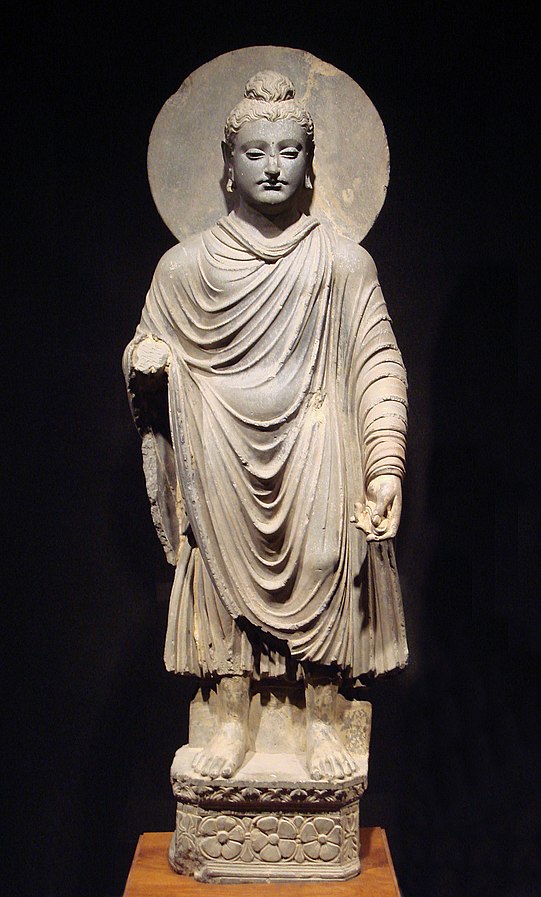
Buddha
2d-3d Century AD. Kushan Dynasty. Schist.
Near Peshawar, Pakistan (ancient Gandhara).
Tokyo National Museum, Japan.
This sculpture illustrates an early development of Buddhist iconography, long before its introduction in Japan.
Shown here is a fine standing Buddha from Gandhara, a region northwest of India that comprises modern-day Pakistan and Afghanistan. Gandhara was settled by Greeks in the wake of conquest by Alexander the Great in 327 BC. Its most characteristic sculpture dates to Roman times, approximately 100 AD to 300 AD. The subject matter in this period is Buddhist, but the style is Roman (not "Greco-Roman" or "Hellenistic," as often claimed; see Benjamin Rowland, The Art and Architecture of India, p. 125). Here Buddha is given a European face, and clothed in Roman drapery.

